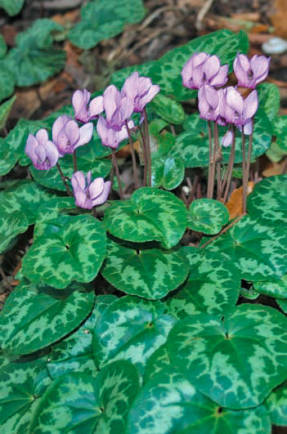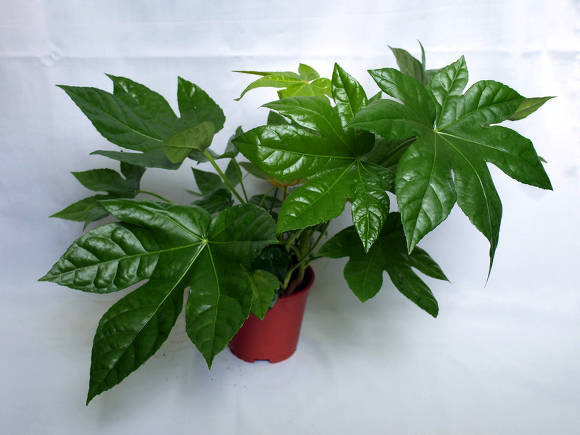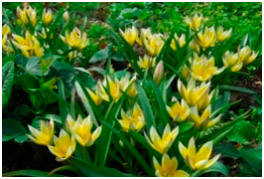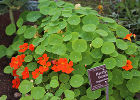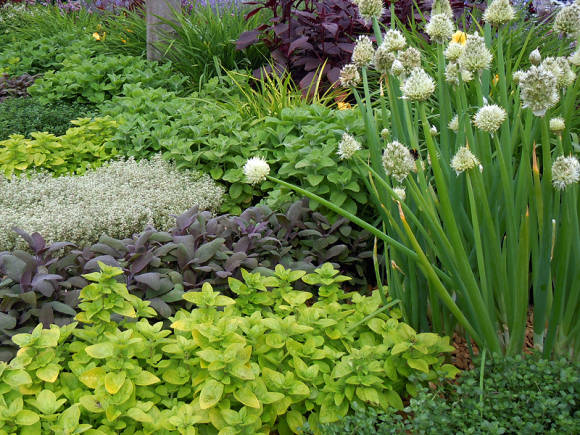It would seem that such interesting things can be found in daisies, there are only two not very bright colors - white and yellow. But modern breeders, like good magicians, know how to create real miracles out of nothing. Daisies can be double, semi-double and simple, high and low, their petals are narrow, wide, with elongated or rounded edges. And as a result, there are many interesting varieties of plants, which are more correctly called the nivyanik. The cornflower grows well in open sunny places, loves fertile soils. The daisy grows quickly, so it must be divided frequently. Spring and early autumn are the best times for division. After three years, the bushes grow so much that it is already difficult to cope with them. If the bushes are not divided, putting them off for later, at some point the plant can simply be lost.

Simple garden chamomile - common daisy, daisy, or meadow chamomile(Leucanthemum vulgare) - blooms from early June for almost two months. Plant height - 60-70 cm, flowers are collected in a flower basket (yellow - tubular in the middle, reed - white at the edges), 6-7 cm in diameter. This cute weed lives its own life in the garden. Common cornflower and its varieties are distinguished by their durability. In varietal nivyaniks, the size of the flower basket is much larger than that of the species. They do not weed, unlike their ancestors. The most famous varieties Maxima Koenig (Maxima Kenig) and May Queen (May Queen). The King, as he should be, is tall, handsome and stately (90/12), and the Queen is graceful, bright, short (50/12), with shiny dark green leaves.
Due to its decorativeness, the most popular nivyanik is gaining more and more popularity among flower growers. (Leucanthemum maximum), although it is less durable and stable than the common daisy. The winter hardiness of the daisy is the highest, but it only lives for three years, and it must be divided in two years. A plant with a rosette of leaves overwinters. This daisy and its varieties are characterized by a later and longer flowering, from July to autumn. The continuity of flowering is ensured by the appearance of more and more new shoots throughout the season. Such growing conditions practically turn a perennial into a minor. Therefore, if you have purchased the largest varieties of cornflower, try to divide them more often.
A separate species is considered Nivyanik is magnificent(Leucanthemum x superbum), obtained by the American gardener Luther Burbank in 1890. This is a complex hybrid of the common daisy and the largest, then crossed with two more species of "chamomiles", although its varieties are often referred to as the largest daisy.
The assortment includes simple and terry varieties. The most famous of them are - Alaska (Alaska), Beethoven (Bethoven), Polaris (Polaris), Little Princesses (Little Princess). Alaska has proven to be one of the more resistant varieties. Low daisies like Little Princesses Snow Lady (Snow Lady) 25-30 cm high suitable for planting in the foreground or for alpine slides. Snow Lady is an interesting chamomile with large flowers and wide petals, but fell out pretty quickly. Varieties with terry baskets - Aglaya (Aglay), Exibition (Exhibition), Viral Suprim (Wirral Supreme), Christine Hagemann (Christine Hagemann) are good both in the garden and in the cut.
 |  |
Modern varieties are devoid of the shortcomings of their predecessors. My favorite chamomile Brideal Weil (Bridal Vail) is as good as a bride's veil and can compete with the best varieties of chrysanthemums. A white terry pompom proudly holds its head on a sturdy stem. Chamomile pleases with its long and abundant flowering. This chamomile, as a true queen, stands out among its subjects: and its leaves are not like everyone else's, but more shiny, dark green, and the frost resistance is excellent, and it grows splendidly. Another terry variety - Fiona Coghill (Fiona Coghill), its creamy white petals form a tall pompom with a yellow-green center that looks like a shepherd's hat.
 |  |
Of the daisies with ordinary petals, the most perfect are Sunny Side Up (Sunny Side Up). A double layer of white petals surrounds a large yellow center. The tips of the petals are notched, around the center there are some small white curls. It would seem nothing special, but you need to see this flower in order to appreciate it.
 |  |
Among the low varieties there are Eisstern (Eisstern), Broadway Lights (Broadway Lights), Osiris Niji (Osiris Neige), Stein (Stine). The petals of Broadway Lights are pale yellow in color, they brighten as they bloom, the bush has yellow and cream flowers at the same time. Osiris Niji is a semi-double chamomile with many narrow thin petals around a small dark yellow center. Stein is an unusual chamomile, at the beginning of its dissolution its flowers look like a star.
 |  |
Old Cat Vareti (Old Court Variety) - light and airy, its thin petals are slightly curled around a large yellow center. Interesting variety Crazy Daisy (Crazy Daizy). The variety fully justifies its name, it blooms and grows, indeed, very quickly, the bushes have to be divided every year. The flowers are large, with snow-white petals. The only variety that repeats its properties when propagated by seeds.
 |  |
Growing
For daisies, only sunny places are needed. In partial shade, they develop and bloom much worse. This is especially true for the largest daisy and varieties based on it. Nivyany are picky about soils, they do not like light sandy or heavy clay soils. Before planting, care must be taken that the soil is fertile, sandy loam or loamy. Good drainage is another important prerequisite for the growth and flowering of the field. In damp or waterlogged areas, plants often get sick and age faster. On poor soils, as well as with a lack of moisture, the flowers become smaller. The frequency of division of the curtains depends on the original species; the varieties of the sage grass are in need of more frequent division than the varieties of the sage grass hybrid and ordinary.
Chamomile loves watering, but does not tolerate waterlogging. With proper watering, the result is visible immediately, the color of the flowers becomes brighter, and the flowers themselves are larger. Nivyanik loves top dressing, especially with organic fertilizers, two or three top dressing per season is quite enough. To preserve decorativeness and re-flowering, faded shoots are best removed. Repeated flowering is possible under favorable conditions. It is better to mulch terry varieties for the winter, but in early spring do not forget to remove the shelter as early as possible so that the bushes do not come out.
 |  |
Reproduction
Nivyaniki are propagated by seeds, dividing bushes and cuttings. Seeds can be sown in spring or in the second half of summer. When propagated by seeds, varietal chamomile does not repeat the properties of the original variety, with the exception of Crazy Daisy. It is better to divide the bushes in the spring. The bush is divided into small parts, which are immediately planted in the soil. The division should consist of a stem with a rosette of leaves and rhizomes. Delenki are planted at a distance of 20-30 cm from each other. Young spring divisions take root without problems, in contrast to the autumn division. You just need to remember about moderate watering during rooting.
Small root rosettes with leaves are taken on the cuttings. This operation is best done in the second half of the summer.
In nurseries, daisies are often propagated by microcloning. The tiny plants are usually sold in early summer. They need to be transplanted into pots with nutritious soil and kept in the shade, not forgetting to water. After a month and a half, the plants are planted in the ground, as usual. Micro-cloned plants can be immediately planted in the soil, but be sure to make something like a greenhouse for them. With good and proper care, small "parcels" sometimes even try to bloom in the first summer, but, of course, they do not need to be allowed to do this.
 |  |
Pests and diseases
Nivyan people have many diseases and enemies. They can suffer from fungal diseases in rainy weather, they are prone to all kinds of spots, rot at the base of the stem. Preventive treatments with Alirin, Gamair, Fitosporin on leaves and soil will not be superfluous for them. For the treatment of diseases, systemic fungicides Topaz, Skor are suitable, which are recommended to be alternated with contact drugs.In case of severe damage, the aerial part of the bush can be cut off, spilled with a fungicide, and covered with a jar. The new growth is usually healthy. To combat pests - thrips, aphids - use the systemic insecticides Confidor, Aktaru and a broad-spectrum contact agent Actellik.
Usage
Nivyaniki are used not only to decorate the garden, but also for cutting. Moreover, the cultivation of nivyaniks for cutting has its own specific features. Bushes intended for cutting should have a large feeding area, they need to be divided annually for constant rejuvenation, they need good feeding, especially organic matter, and regular watering. Care should be intensive, then the flowers will be large and on longer peduncles. Chamomiles stand in water for a long time, terry chamomile - up to 10 days with the addition of HB-101. Bouquets of chamomile with a sprig of gypsophila or basil are especially good, i.e. with something gentle and airy.

When using nyvany in design in a mixborder or on flower beds, they must be placed so that they can be easily approached, since they need frequent digging and replanting. They belong to the group of labor-consuming plants. Nivyaniki are good as individual plants in groups on lawns, against a background of green bushes. You can make a separate flower garden from a variety of daisies that bloom at different times. In spring - doronicums, in summer - nivyaniki, pyrethrum, small petals, closer to autumn - geleniums, echinacea, rudbeckia. Nivyaniki, pyrethrum can serve as the basis of a flower garden from meadow plants with the addition of bluebells, yarrow, poppies and cereals.

